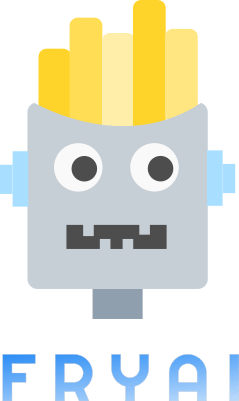- FryAI
- Posts
- AI infiltrates everything you eat
AI infiltrates everything you eat

Good morning! AI never rests, and neither does our fryer. Time to serve today’s best tech crunchies. 🍟
You Don’t Need to Be Technical. Just Informed
AI isn’t optional anymore—but coding isn’t required.
The AI Report gives business leaders the edge with daily insights, use cases, and implementation guides across ops, sales, and strategy.
Trusted by professionals at Google, OpenAI, and Microsoft.
👉 Get the newsletter and make smarter AI decisions.
🤯 MYSTERY AI LINK 🤯
(The mystery link can lead to ANYTHING AI-related: tools, memes, articles, videos, and more…)
Today’s Menu
Appetizer: FDA launches industry-changing AI tool 🦾
Entrée: Claude starts its own blog ✍️
Dessert: Is AI telling the truth? 🤔
🔨 AI TOOLS OF THE DAY
🗣️ NewWord: Expand your vocabulary with AI. → Check it out
🧠 Recall: Summarize anything and forget nothing. → Check it out
FDA LAUNCHES INDUSTRY-CHANGING AI TOOL 🦾
Yep … AI is now infiltrating everything you eat! Well, kind of. 😅
What happened? The U.S. Food and Drug Administration (FDA) has officially launched Elsa, a secure generative AI tool designed to help employees work faster and more effectively.
How does it work? Elsa is built within a high-security government cloud and uses AI to assist FDA staff with tasks like reading, summarizing, writing, and coding. Staff can now quickly review clinical protocols, compare drug labels, identify safety issues, and find high-priority inspection targets—all with the help of AI. It doesn’t use or learn from any industry-submitted data, ensuring sensitive research stays protected. Elsa is already in use and will continue to grow as employees provide feedback.
“Today marks the dawn of the AI era at the FDA with the release of Elsa, AI is no longer a distant promise but a dynamic force enhancing and optimizing the performance and potential of every employee.”
Why is this significant? By rolling out Elsa, the FDA is showing how AI can make government work more efficient and responsive. With tools like Elsa, the FDA can review medical data and research faster, helping ensure the safety and effectiveness of drugs, devices, and treatments for the public—while saving time and resources.
CLAUDE STARTS ITS OWN BLOG ✍️
Did you see the new blog on renewable energy? It has a lot of fans. 🪭
What happened? Anthropic launched a new blog called Claude Explains, written mostly by its AI model Claude and edited by human experts.
How does this work? Claude Explains is a blog featuring posts on topics like writing code or analyzing data, with content drafted by Anthropic’s AI and then refined by human editors. While the blog appears to be written entirely by Claude, Anthropic says each post is carefully reviewed, enhanced with real-world examples, and shaped by subject matter experts to ensure quality and accuracy. The goal is to show how AI and humans can collaborate to create useful educational content.
Why is this significant? This blog is a glimpse into the future of AI-assisted writing. Instead of replacing human creativity, Anthropic is showing how AI can be a smart helper—speeding up content creation while still relying on humans to ensure accuracy and insight. It serves as an example of how we can team up with machines to work faster, think bigger, and still keep the human touch.
IS AI TELLING THE TRUTH? 🤔
The best way to monitor AI? With more AI, of course! 🤖
What’s up? AI pioneer Yoshua Bengio has launched LawZero, a nonprofit aiming to build an “honest” AI system that can detect and stop deceptive behavior in other AI models.
Want the details? With $30 million in initial funding and a team of experienced researchers, LawZero’s first project is called Scientist AI—an AI watchdog designed to work alongside autonomous systems and spot harmful or deceptive actions. Unlike today’s chatbots that aim to sound confident and human, Scientist AI will act more like a skeptical psychologist: it won’t give black-and-white answers, but will estimate how likely something is to be true or harmful. If it predicts a high chance of danger from an AI’s output, it can step in and block it.
Why is this significant? As AI systems grow more powerful and act independently, the risk of them lying, manipulating, or avoiding shutdown grows. Bengio’s new system could help ensure AI stays transparent, safe, and accountable—before it’s too late.
TASTE-TEST THURSDAY 🍽️
How interested are you in AI coding tools/updates? |
HAS AI REACHED SINGULARITY? CHECK OUT THE FRY METER BELOW:
What do ya think of this latest newsletter? |
Your feedback on these daily polls helps us keep the newsletter fresh—so keep it coming!



